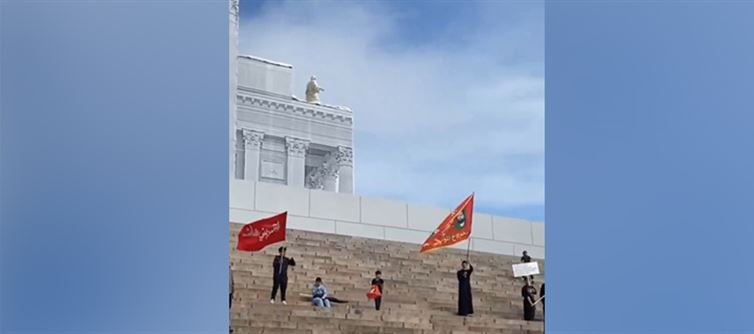
The post connects this event to similar occurrences in other Western cities, noting that just the previous day, Islamists had engaged in a comparable demonstration at the melbourne Cathedral in Australia, and a week prior at the Montreal Cathedral in Canada. This pattern has led to speculation about whether these actions represent a coordinated effort or a burgeoning trend of Islamist intimidation in public spaces.
 The Helsinki Cathedral, built in the 19th century and a popular tourist attraction, has historically been a site for peaceful gatherings and cultural events. The juxtaposition of its serene purpose with the aggressive display of jihadist symbolism has raised alarms among observers, both locally and internationally.
The Helsinki Cathedral, built in the 19th century and a popular tourist attraction, has historically been a site for peaceful gatherings and cultural events. The juxtaposition of its serene purpose with the aggressive display of jihadist symbolism has raised alarms among observers, both locally and internationally.Helsinki Cathedral, originally known as St. Nicholas' Church, was constructed during a period when finland was under Russian rule, reflecting a blend of neoclassical architecture inspired by Russian models like St. Isaac's Cathedral and Kazan Cathedral in St. Petersburg. Its transformation into a cathedral in 1959 underscores its role as a central religious and cultural institution in Finland. The presence of jihadist flags here is seen by many as a direct challenge to this heritage.
The jihadist flag, as described in historical contexts, is often associated with groups like al-Qaeda, the Taliban, and ISIS, symbolizing a call to jihad (struggle or holy war). Its display in such a setting is interpreted by critics as an act of provocation, aiming to assert dominance or spread fear.




 click and follow Indiaherald WhatsApp channel
click and follow Indiaherald WhatsApp channel